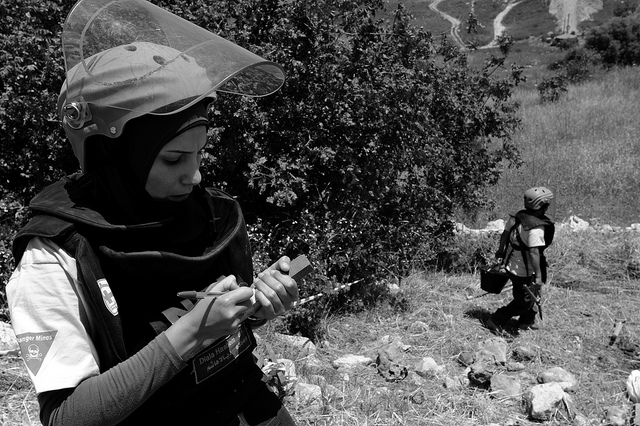Eight years ago today, the Convention on Cluster Munitions entered into force, prohibiting the use and production of cluster bombs. The Convention has had a major impact on many levels, including reducing the use of cluster bombs and preventing casualties.
Ten achievements:
- 120 states have joined the Convention. They all haven’t used cluster bombs since 2008.
- Most other states no longer use cluster bombs, even though they have not yet joined the Convention.
- 18 countries stopped producing cluster bombs. Argentina also stopped producing cluster bombs, even though it has not yet joined the Convention. Cluster bomb production in the United States has effectively stopped.
- More than 535,000 submunitions that contaminated areas around the world were found and destroyed (as of 2016).
- Cluster munitions remnants were cleared from at least 425km2, making it safe for farmers to farm and children to play.
- Since joining the Convention, 7 states have completed clearance of all land contaminated with cluster bombs in their country.
- The countries that are party to the Convention have destroyed 97% of their cluster bombs. This amounts to 1.4 million cluster munitions and more than 175 million submunitions.
- In 2016, countries donated $564.5 million for mine clearance. Clearing cluster bombs remnants is expensive and low-income countries most heavily impacted by cluster bomb remnants depend on this aid.
- At least 88 banks, pension funds and insurers from around the world no longer invest in companies making cluster bombs or have limited their investments.
- Since 2010, five companies have promised to stop producing cluster bombs. This includes companies from countries that have not joined the Convention.
What is a cluster bomb? A cluster munition is a bomb containing many smaller bomblets, called submunitions. The bomb opens up in mid-air to release tens or hundreds of small bombs, which then cover an area up to the size of several football fields. Anybody within the strike area of the cluster munition, be they military or civilian, is likely to be killed or seriously injured. Moreover, many of the submunitions do not explode as intended, and they end up like landmines. They can remain a fatal threat to anyone in the area long after a conflict ends. As a result, most victims of cluster bombs are civilians — in 2016, 98% of recorded victims were civilians.
How were they banned? The Convention was the result of years of campaigning by civil society organizations from around the world and of government level diplomacy. The focus was on the consequences of cluster bombs on civilians and the weapons´ long-term effects.
Aren’t they still used? Some countries continue to use cluster bombs and cluster munitions still cause hundreds of casualties every year. Much work is required in clearing the large areas of land in countries such as Laos, Afghanistan and Syria to prevent harm to civilians.
It works! — Eight years on, the Convention on Cluster Munitions has proved to be extremely effective. The ban works – and shows the way for other disarmament treaties, including nuclear weapons.
Read more about PAX’s work in the field of cluster munitions.




